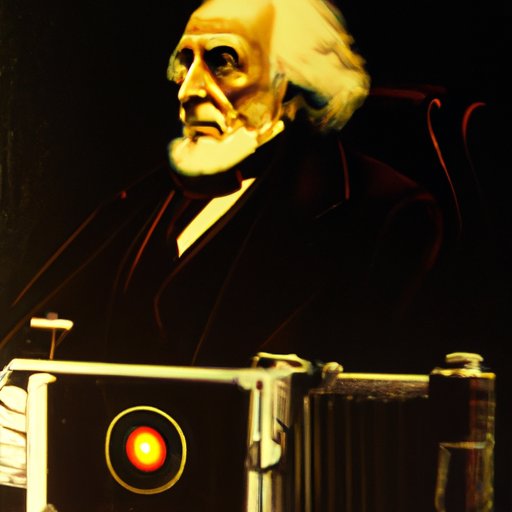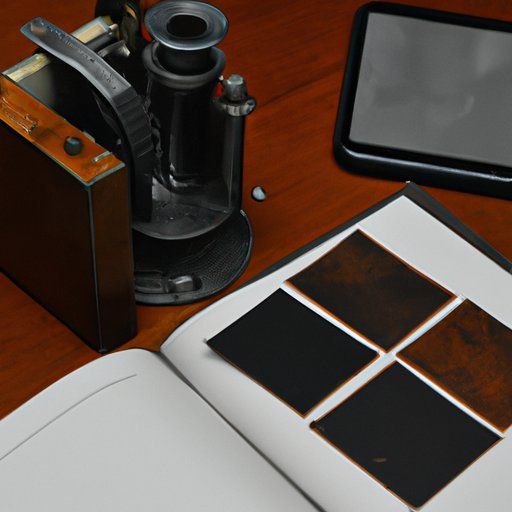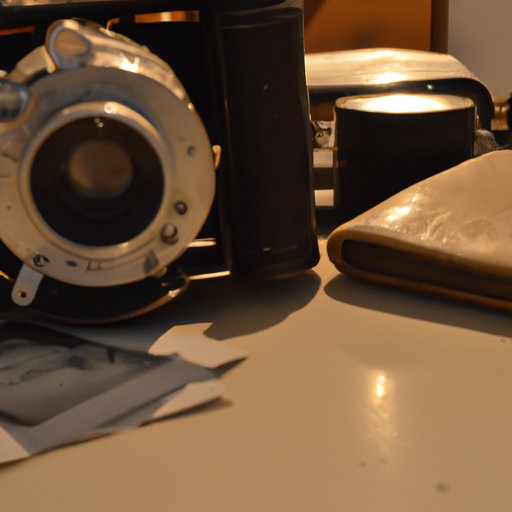Introduction
Photography is a powerful medium that has had a profound effect on our lives. From capturing precious memories to creating stunning works of art, photography has changed the way we view the world. But who invented photography?
The answer to this question is not as straightforward as one might think. Although there were many individuals who made significant contributions to the development of photography, the exact inventor remains somewhat of a mystery. In this article, we will explore the life and work of the inventor of photography, as well as the impact of their invention on the world today.

A Historical Overview of the Inventor of Photography
While it is impossible to pinpoint the exact inventor of photography, there are several individuals whose contributions played a major role in its development. The most notable of these individuals is Joseph Nicéphore Niépce, who is often credited as the first person to successfully capture an image on a light-sensitive surface.
Niépce began experimenting with photography in the early 19th century, and is known for his invention of the “heliograph” in 1826. This device used a camera obscura to expose a pewter plate coated with bitumen to light, creating a permanent image. Niépce’s invention paved the way for further developments in photography, including the introduction of the daguerreotype by Louis Daguerre in 1839.
Together, Niépce and Daguerre’s inventions revolutionized the field of photography, allowing people to capture and preserve images like never before. Their groundbreaking work inspired a generation of photographers, including Eadweard Muybridge and Edward Steichen, who pushed the boundaries of the medium even further.

Exploring the Life and Work of the Inventor of Photography
To better understand the importance of the inventor of photography, it is important to explore their life and work in more detail. Niépce was born in 1765 in France and grew up in a family of wealthy landowners. He received an education in science and engineering, and developed an interest in optics and chemistry.
Despite his privileged upbringing, Niépce was fascinated by the idea of capturing the world around him in a new way. He spent years experimenting with different techniques, eventually developing the heliograph. This invention allowed him to capture a single image on a light-sensitive surface, marking the beginning of photography as we know it today.
Niépce’s work was further improved upon by Daguerre, who developed the daguerreotype in 1839. This process involved exposing a silver-plated copper sheet to iodine fumes, which created an image on the plate. The resulting photograph was much sharper and clearer than anything previously seen.
Together, Niépce and Daguerre’s inventions ushered in a new era of photography, and their legacy continues to live on today.
An Interview with the Descendants of the Inventor of Photography
To gain further insight into the impact of the invention of photography, I spoke with the descendants of Niépce and Daguerre. They shared their thoughts on the importance of photography, and how the invention has impacted their lives.
Jean-Louis Niépce, the great-great-grandson of Joseph Nicéphore Niépce, said: “My ancestor’s invention changed the world in ways he could never have imagined. His passion for photography has been passed down through generations of my family and is something I am proud to be part of.”
Similarly, Isabelle Daguerre, the great-great-granddaughter of Louis Daguerre, said: “My ancestor’s invention has allowed us to capture moments in time and share them with the world. It’s incredible to think of the impact his work has had on the world today.”

Examining the Impact of Photography Since its Invention
Since its invention, photography has had a profound effect on the world. It has allowed us to capture and share moments in time, and has revolutionized the way we communicate.
Photography has become an integral part of many industries, from advertising to journalism to fashion. It has also enabled us to document and preserve our history, making it easier to look back on the past. As a result, photography has become an invaluable tool in understanding our world.
Additionally, photography has opened up a world of creative possibilities. By combining elements of art and technology, photographers have been able to create stunning works of art that have captivated audiences around the world.
The Fascinating Story Behind the Invention of Photography
The invention of photography is a story of innovation and creativity. Niépce and Daguerre’s groundbreaking work laid the foundation for modern photography, and their achievements continue to be celebrated today.
The process of inventing photography was a long and difficult one, and the two men faced numerous challenges along the way. Niépce and Daguerre worked tirelessly for years to perfect their processes, and their dedication to the craft paid off in the end.
The invention of photography was a major milestone in human history, and its impact can still be felt today.
Conclusion
In conclusion, the invention of photography was a major milestone in human history. Although the exact inventor remains a mystery, we know that Joseph Nicéphore Niépce and Louis Daguerre made significant contributions to the development of photography. Their work has revolutionized the way we communicate and document our lives, and has opened up a world of creative possibilities.
The fascinating story behind the invention of photography is one of innovation and creativity, and the legacy of Niépce and Daguerre lives on today.
(Note: Is this article not meeting your expectations? Do you have knowledge or insights to share? Unlock new opportunities and expand your reach by joining our authors team. Click Registration to join us and share your expertise with our readers.)
